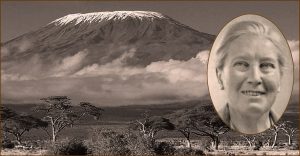Geological Origins of the Ngorongoro Crater
The Ngorongoro Crater, located in Tanzania, is a geological marvel that attracts thousands of visitors each year. This natural wonder is the result of complex geological processes that have been shaping the Earth’s surface for millions of years.
The formation of the Ngorongoro Crater can be traced back to the volcanic activity that occurred in the region over two million years ago. The area was once home to a massive volcano known as Mount Ngorongoro, which is believed to have been even taller than Mount Kilimanjaro. However, around 2.5 million years ago, this volcano erupted in a cataclysmic event that caused its summit to collapse, forming the crater we see today.
The crater itself is a massive caldera, measuring approximately 20 kilometers in diameter and reaching depths of up to 600 meters. It is one of the largest intact calderas in the world and is home to a diverse array of flora and fauna, making it a UNESCO World Heritage Site.
Factors Influencing Crater Formation
Several factors played a crucial role in the formation of the Ngorongoro Crater, including the geological composition of the region and the tectonic forces at play. The area around the crater is characterized by volcanic rocks, including basalt and tuff, which are remnants of the ancient volcanic activity that shaped the landscape.
The collapse of Mount Ngorongoro’s summit was likely triggered by a combination of factors, including the weakening of the volcano’s structure due to repeated eruptions and the presence of underground magma chambers. As the volcano became increasingly unstable, the pressure from the magma beneath it caused the summit to collapse, creating the caldera we see today.
Tectonic forces also played a role in the formation of the Ngorongoro Crater. The region is located along the East African Rift, a tectonic plate boundary where the African Plate is slowly pulling away from the Arabian Plate. This movement has created a series of rift valleys and volcanic mountains in the region, including the Ngorongoro Crater.
Overall, the formation of the Ngorongoro Crater is a testament to the dynamic and ever-changing nature of the Earth’s surface. The interplay of geological processes, volcanic activity, and tectonic forces have come together to create this unique and awe-inspiring natural wonder that continues to captivate visitors from around the world.
To experience the beauty and wonder of the Ngorongoro Crater for yourself, consider booking a tour with Sunset Africa Safari. For booking requests and more information, please contact info@sunsetafricasafari.com.



